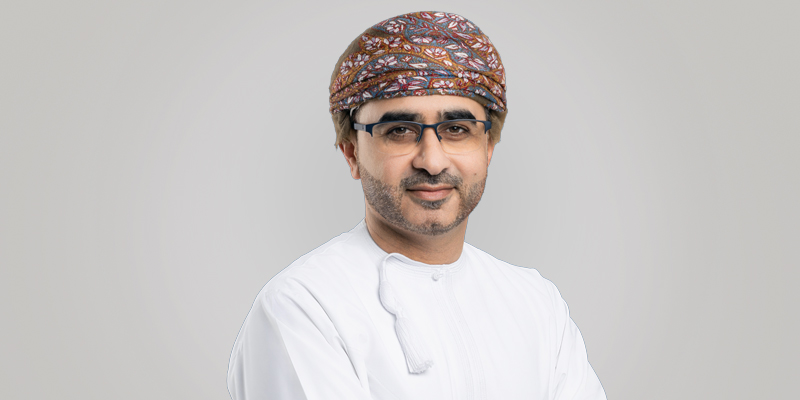
29 Apr Interview with Mr. Hussain Al Lawati, CEO, Development Bank
Development Bank has long been a driving force in supporting national development by financing key sectors such as industry, agriculture, education, and tourism. With its mission aligned to Oman Vision 2040, what role does the bank play in advancing the country’s long-term economic goals and how does it support diversification for Oman’s Vision 2040?
First let me give you some background on the bank. Established in 1976, Development Bank initially focused on small-ticket transactions for micro and small businesses. Since then our mandate has been significantly expanded and we are today a robust development bank involved in major infrastructure development projects including airports, hotels and railways. And as our liquidity is lower than commercial banks, we play an important role in financing supply chains for large projects rather than funding them solely. To meet this growing demand, our capital fhas been increased from US$260 million to US$1.3 billion.
As for our role in helping achieve the goals and ambitions of Oman Vision 2040, this is something the bank is proud to be entrusted with. Essentially what we do is bridge the GDP contribution gap through our support of priority sectors – renewables, manufacturing, logistics, tourism, mining, agriculture and fisheries and more. With a bigger appetite for risk than commercial banks who traditionally are involved in areas such as contracting and trading, we are in areas where financing is harder to come by. Involved in the early stages of projects, we provide funding until they mature, at which point we transition them to commercial banks.
Last year, we finetuned our lending strategy, defining it around five key pillars: job creation, self-sufficiency, food security, regional development and technology. While creditworthiness is, of course, important, our priority is a project’s economic impact so an A-grade company may not always be our top choice for lending. To ensure we make the right choices and align with our goals in this, we worked with S&P to develop a tool that evaluates both credit strength and development impact. At the end of the day, the final score from this assessment is what determines our lending decisions.
The collaboration with the Ministry of Education and Karwa Motors to fund 1,000 school buses — with interest-free financing for the first 510 buses — highlights the bank’s role in fostering impactful partnerships. Is this a model that has been applied to other sectors?
I agree. That initiative is an excellent example of Development Bank in action and making a difference. Thanks to the integration of cutting-edge technology, student safety is enhanced and the new buses create jobs for drivers. Karwa Motors, a SEZAD-based Omani manufacturer, produces the buses which means the local supply chain is strengthened. Since these buses are not cheap, the bank provides long-term, interest-free loans to drivers, ensuring affordability. In brief, this ecosystem – government, private sector and Development Bank – supports job creation, safety and local industry growth. Another great example of this type of collaboration is our partnership with the Agricultural Association. As background, you should know that Oman imports 70% of its onions despite having sufficient land and water to grow this crop. To address this, we got together with the Agricultural Association and a local community company of 1,800 farmers. The ministry provided land and water access and we funded the project. Oman Investment Authority’s Nakheel came on board to buy the entire onion harvest, ensuring steady income for farmers and repayment of our loans – creating a complete ecosystem. Development Bank is delighted to be able to help unlock the strong potential of Omani agriculture and build food security. Indeed, I should add we are always keen to support the creation of in-country value and boost local production with long-term, low- or zero-interest loans, reducing costs.
How does Development Bank contribute to technology and innovation?
Oman is a tech-forward nation and innovation is basically part of our DNA so these are two things Development Bank is absolutely involved in. We actively seek and support such projects rather than waiting for them to come to us, especially in sectors like manufacturing where, for example, upgrading to advanced technology can cut production time by 50%, reduce waste by up to 20% and improve product quality. A particular area of interest for us at the moment is fintech, as these new companies will help provide financial support to sectors that Development Bank may not be able to access on its own. Our involvement with them is a win all round.
What is your final message for our readers who are considering visiting or investing in Oman?
Oman is a breathtakingly beautiful country with a rich and vibrant heritage, this is well documented. But your readers should also know we are also an ambitious, goal-oriented, business-friendly country – an exceptional investment destination with a robust, evolving economy which is projected to grow by 3.4% in 2025. At Development Bank, we are eager to support genuine investments, especially those aligned with our 2050 Net Zero target. Green hydrogen and renewable energy-related projects are our top priorities. Japan is a leader in green hydrogen and Oman has allocated land 41 times the size of London – that’s 65,000 square kilometres – for such initiatives. We fast-track and prioritize these projects, understanding their long-term return on investment. Unlike commercial banks with 8 – 10 years loan terms, we offer financing of up to 20 years for net-zero projects. If you have a serious investment, we are ready to support you. Get in touch and let’s talk about how together we can grow.
As a final word, may I say that Development Bank wishes Expo 2025 Osaka every success. It promises to be a transformative global gathering which, with its chosen themes, will generate meaningful dialogue and inspire concrete actions towards creating a more sustainable and inclusive world.
